The Supercar #

Honda NSX. Image courtesy of Gizmodo.
Introductory Thoughts #
Exotic cars exist at the intersection of the latest design and technology trends, representing the pinnacle of automotive engineering. Many of these exotic cars conform to a low slung, ‘wedge’ design, distinct from the conventional automobile.
In addition to being visually striking, exotic cars have an incredible performance envelope, with 200+ mph top speeds and incredible cornering performance. However, how much of the exterior design is an instance of the form following function? Do these exotic cars even owe any of their performance to their alien shape?
Background #
The cars used for the comparison are shown below.
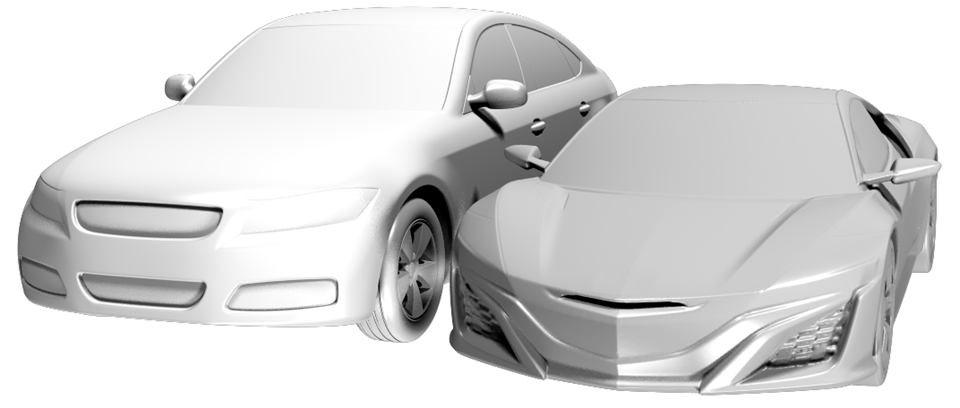
On the left is the DrivAer model, a car model developed by staff at the Technical University of Munich. It’s overall geometry and proportions are representative of a modern german sedan. On the right is the second generation Acura NSX, a hybrid supercar released in 2016.
Comparison #
Overview #
Any two modern vehicles are generally much more alike aerodynamically than they are different. This is owed to the same general features (windshield, wheels, mirrors..etc) being shared between the two. There is variance due to just the macro geometric differences, but there is not significantly different aerodynamic behavior.

Front Fascia #
Generally, aerodynamicists are able to give designers a considerable bit of freedom on the front fascia. The primary design criteria of the front fascia is to allow the flow to navigate around the front of the car without separating from the surface. This is a concern easily addressed by rounding sharp radii from the front fascia. Once the radii are sufficiently large to eliminate separation (and the threshold is fairly low) further enlargements of the radii do not yield notable performance.
Streamlines are useful aerodynamic visualizations, as they display the path followed by fluid particles. By generating an array of them, we are able to identify macro trends in how the flow navigates around an object.
The streamlines displayed above indicate a remarkable similarity in both flow fields. The flow diverges around the front fascia, navigates the various secondary obstructions presented by the windshield, mirrors and tires, and eventually converges up behind the body.
A considerable aerodynamic detriment of the NSX are the larger wheels and tires it dons. They provide for considerable cornering capability, but as they are exposed to the flow and are very bluff bodies, they quite significantly contribute to the drag. In contrast, due to increasing governmental and consumer demands for higher fuel efficiency, conventional cars benefit heavily from aerodynamic design.
With stringent fuel efficiency standards, aerodynamics play a much larger role in vehicle development than even two decades ago, and this is visible in the evolution of the automobile design. Consumer cars are typically cost-bottlenecked projects. The powertrain of a car is the most expensive subsystem. At highway speeds, most of the power provided by the powertrain is going to overcome aerodynamic drag. If vehicle drag can be significantly reduced, the powertrain can be downsized, allowing the company to reduce total vehicle cost or allocate those resources elsewhere.
The exterior shape of an exotic car is overwhelmingly dominated by styling considerations. This is reasonable, as visual appeal & desire makes these cars sell, not engineering specifications.
The Numbers #
In addition to the qualitative view offered by CFD simulation, quantitative observations can be made as well. The drivAer model and NSX produce virtually identical amounts of drag.
However, just looking at the total drag figure can be misleading. The NSX has a frontal area of 1.52 m2, while the DrivAer has a frontal area of 2.15 m2, demonstrating it’s a nearly 30% larger vehicle when looking head on. In aerodynamics terms, a more apt comparison is provided by looking at the Drag Coefficients, which divide out the frontal areas of both vehicles, providing an assessment of how aerodynamic the actual shape of each car is, independent of size. The NSX has a Cd of .34, while the DrivAer has a Cd of .24, an astonishing 30% lower.
This was demonstrated in this comparison, as the DrivAer model proved to be considerably more aerodynamically shaped than the NSX.
This trend is reflected in the lowest drag coefficient road car being the A-Class Mercedes (at .22). For contrast, the previous record holder for the fastest car in the world, the Bugatti Veyron, has a reported drag coefficient of .39, nearly 80% higher.

A Mercedes A-Class sedan undergoing wind tunnel testing.
Thermal #
The impact aerodynamicists have on these projects is still large, but their primary impact is not visually obvious, as it deals with what’s under the hood.
The thermodynamic efficiency of a powertrain is how much waste heat is produced for a given power output. For example, an ordinary car has around 150kW of power output. At 40% thermodynamic efficiency, the car has to reject 60 (150kW 40%) kW in heat energy. A supercar, producing 600kW of power, has 240 (600kW 40%) kW of heat energy to dispose of.
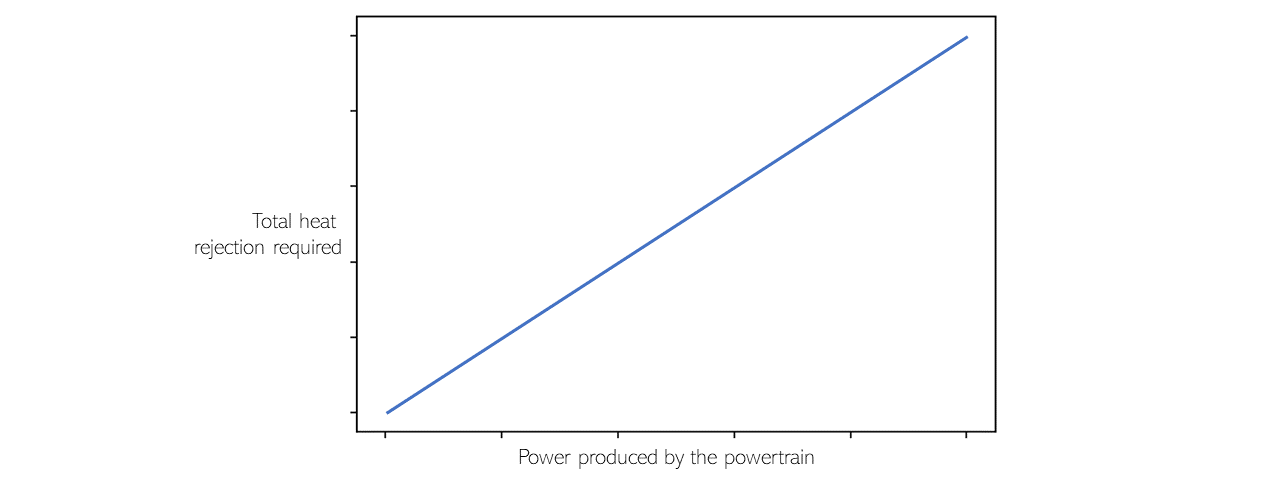 Supercars have to find ways to dispose of this heat without significant compromises. It’s often an unacceptable option to merely increase the size of the radiators (as that carries adverse effects for overall appearance, vehicle mass & packaging), so instead the burden is on the aerodynamic design to efficiently carry away this heat. While not as thrilling as finely contouring a car body, it is nonetheless critical in ensuring a performant vehicle.
Supercars have to find ways to dispose of this heat without significant compromises. It’s often an unacceptable option to merely increase the size of the radiators (as that carries adverse effects for overall appearance, vehicle mass & packaging), so instead the burden is on the aerodynamic design to efficiently carry away this heat. While not as thrilling as finely contouring a car body, it is nonetheless critical in ensuring a performant vehicle.
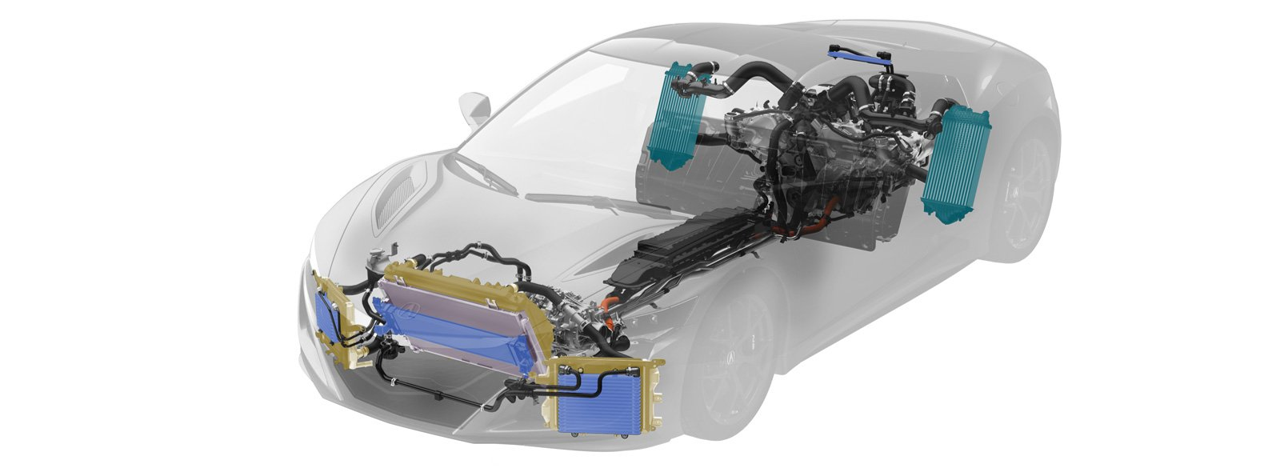
“The Thermal and Aerodynamic Development of a Cooling and Heat Resistance Package for a New Hybrid Sports Car” is an SAE paper written by Honda that describes their entire development process for this car.
Finally, drag is only of two primary aerodynamic forces, the second being lift (but more commonly termed downforce in automotive circles). By adding additional vertical load on the tires (but without the penalty of inertia), the overall grip capacity of the tires is substantially supplemented (as seen in the astonishing cornering capabilities of Formula 1 cars).
Designing for downforce is a much more difficult proposition than simply reducing drag, and unsurprisingly the NSX and DrivAer both actually produce mild amounts of lift, indicating it was not a design criteria.
However, for the supercars that are designed from the onset to generate maximum downforce (as will be discussed in a future article), the physics at play are truly breathtaking.
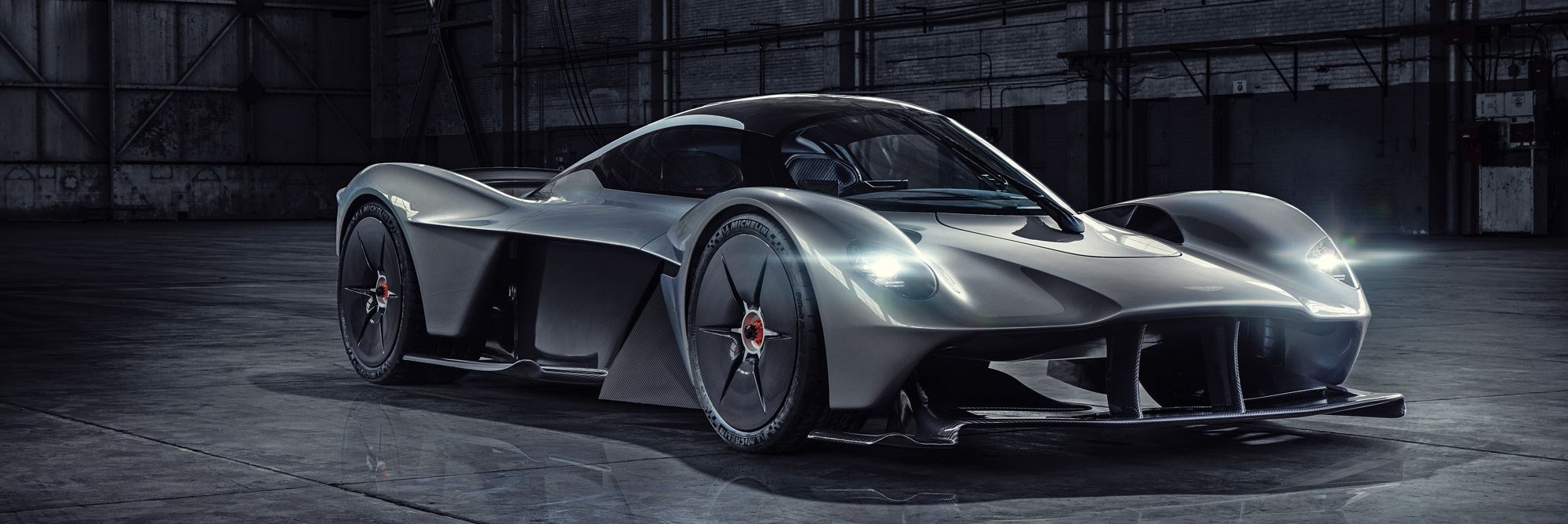
The Aston Martin Valkyrie.
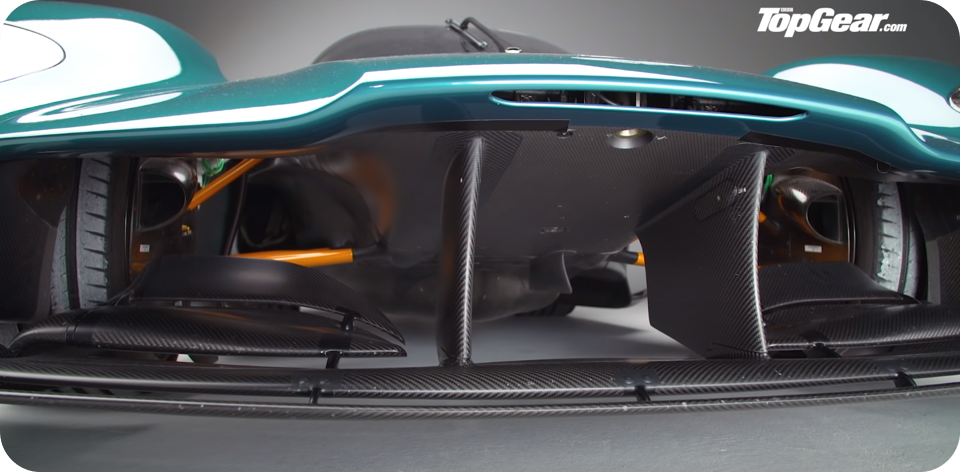
The Aston Martin Valkyrie.
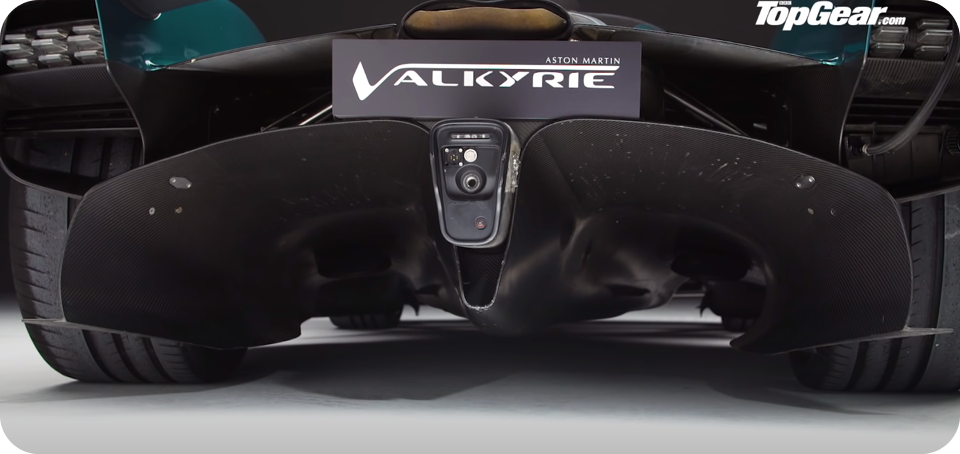
The Aston Martin Valkyrie.
Concluding Thoughts #
In short, the exterior shape of an exotic car is overwhelmingly dominated by styling considerations. This is reasonable, as visual appeal & desire makes these cars sell, not engineering specifications. In contrast, due to increasing governmental and consumer demands for higher fuel efficiency, conventional cars benefit heavily from aerodynamic design.
Instead, the impressive part of an exotic is aerothermal, to reject the massive amounts of heat produced by their powertrains.